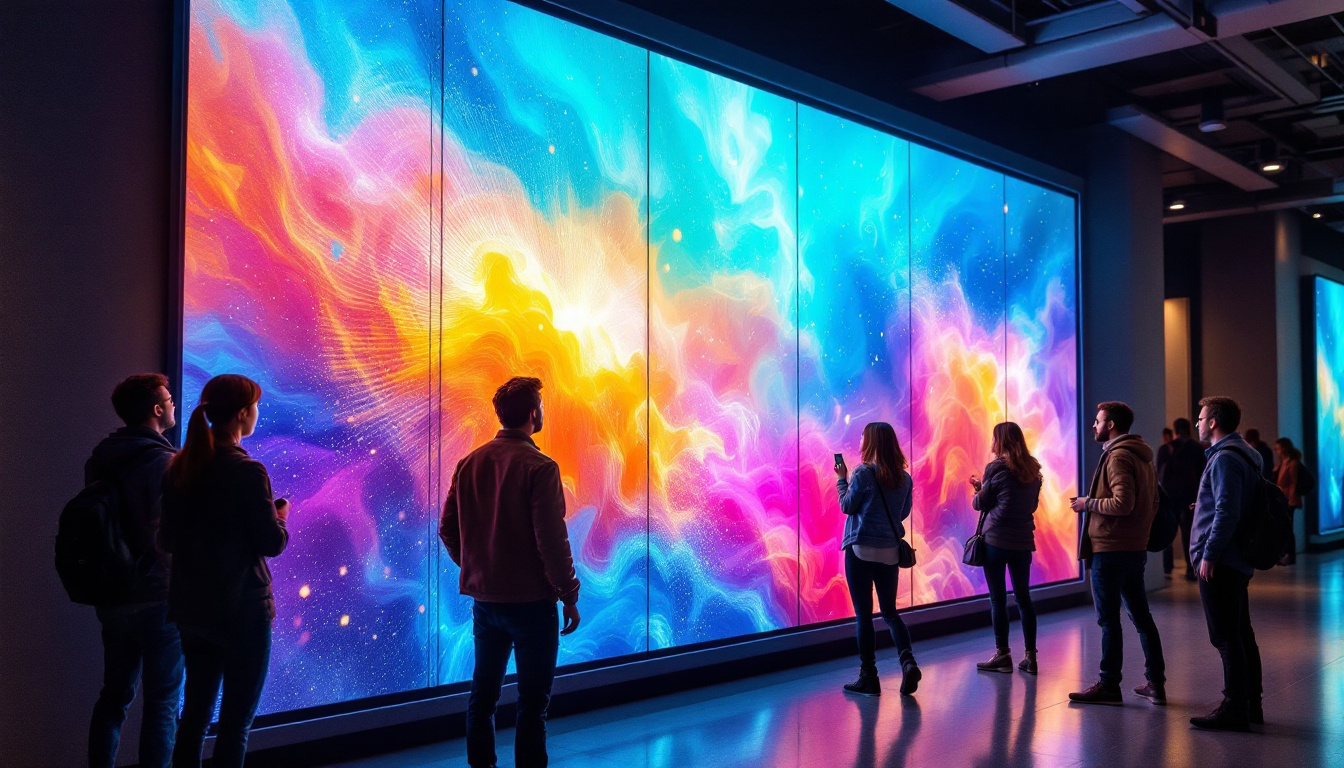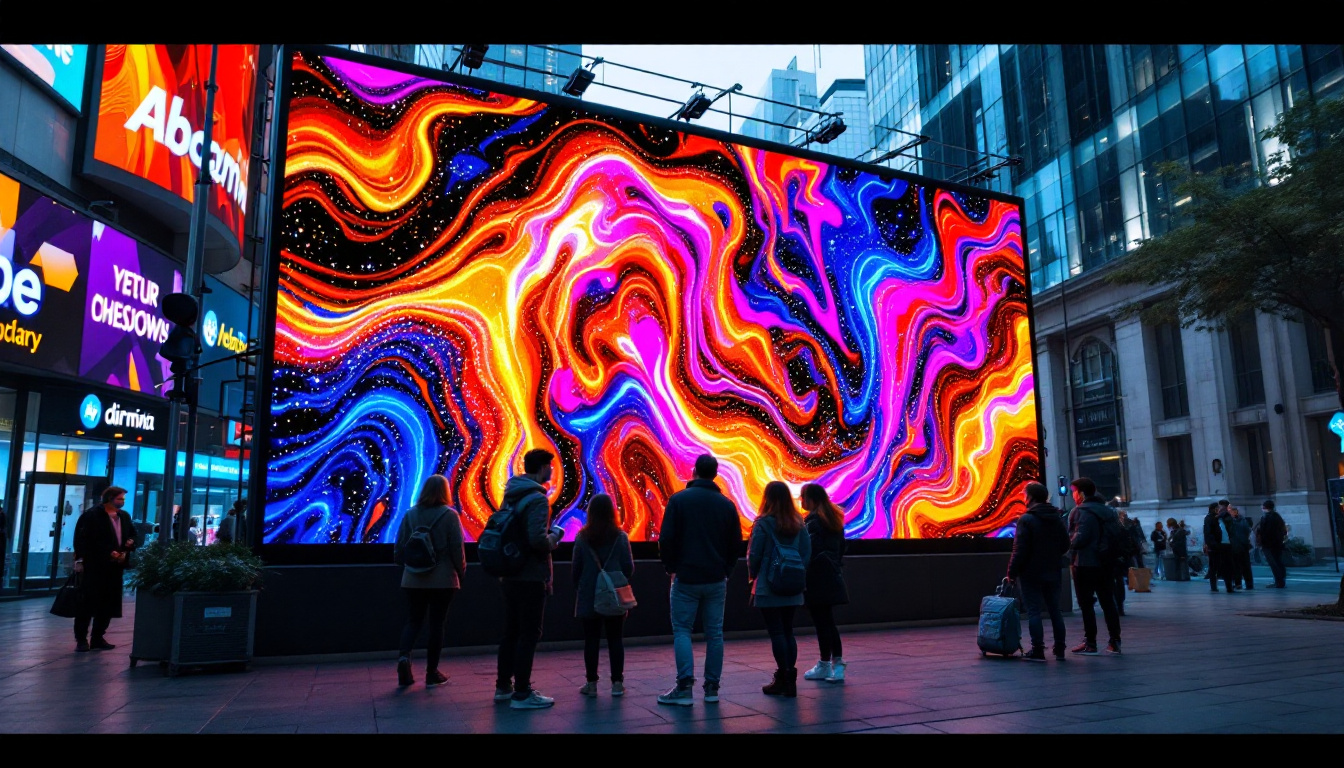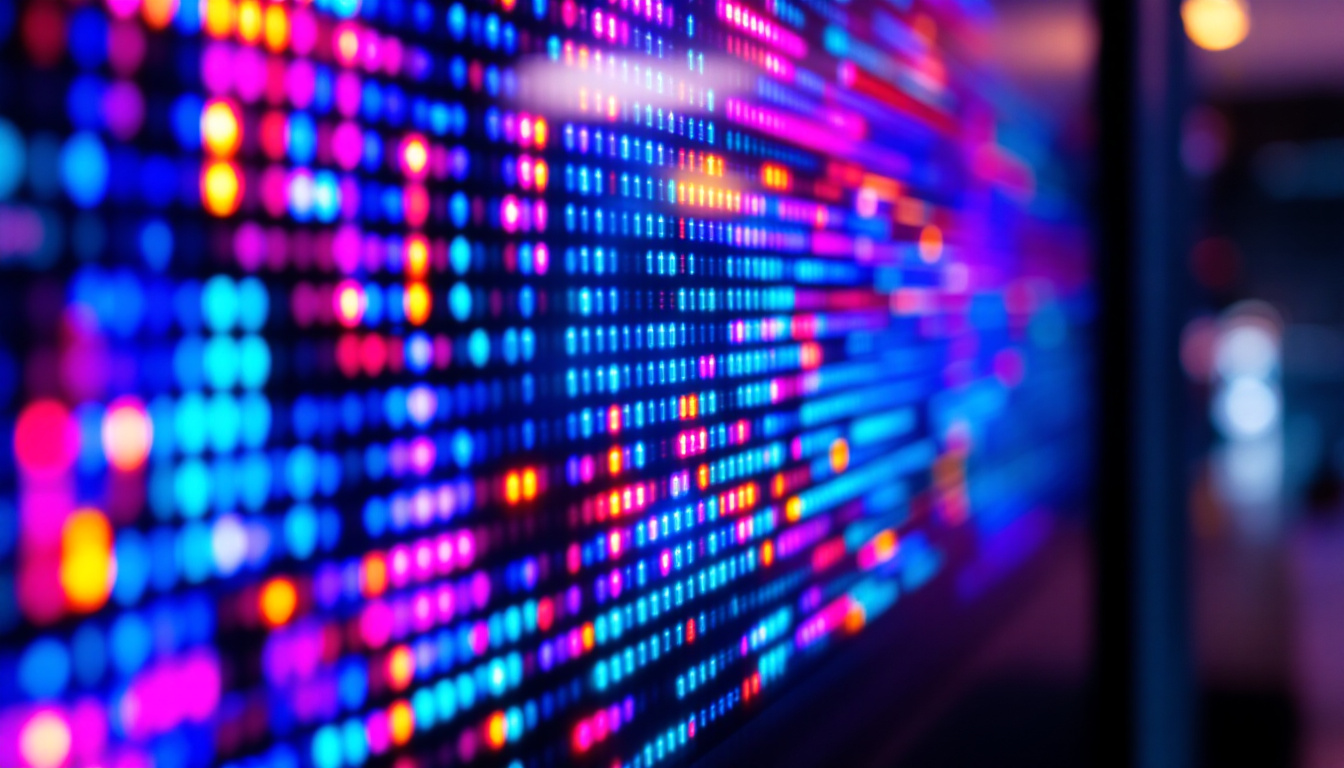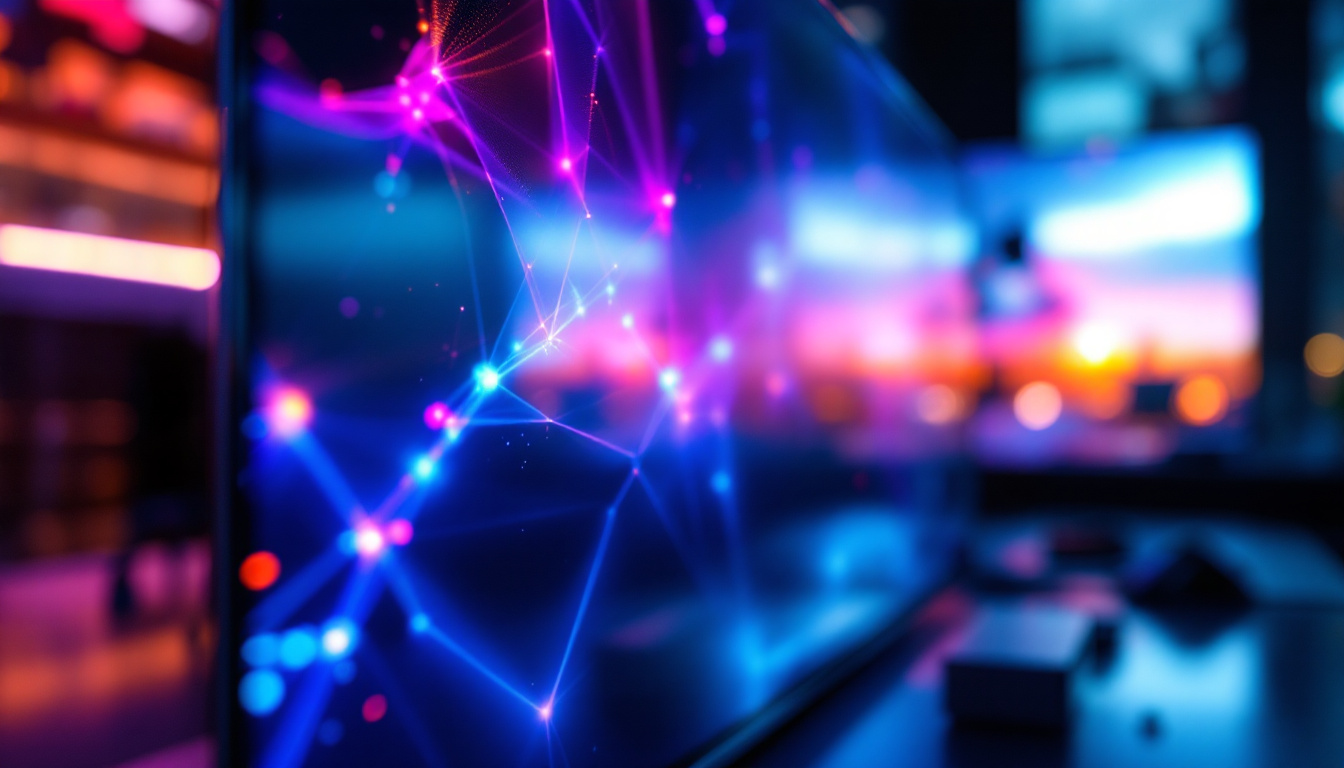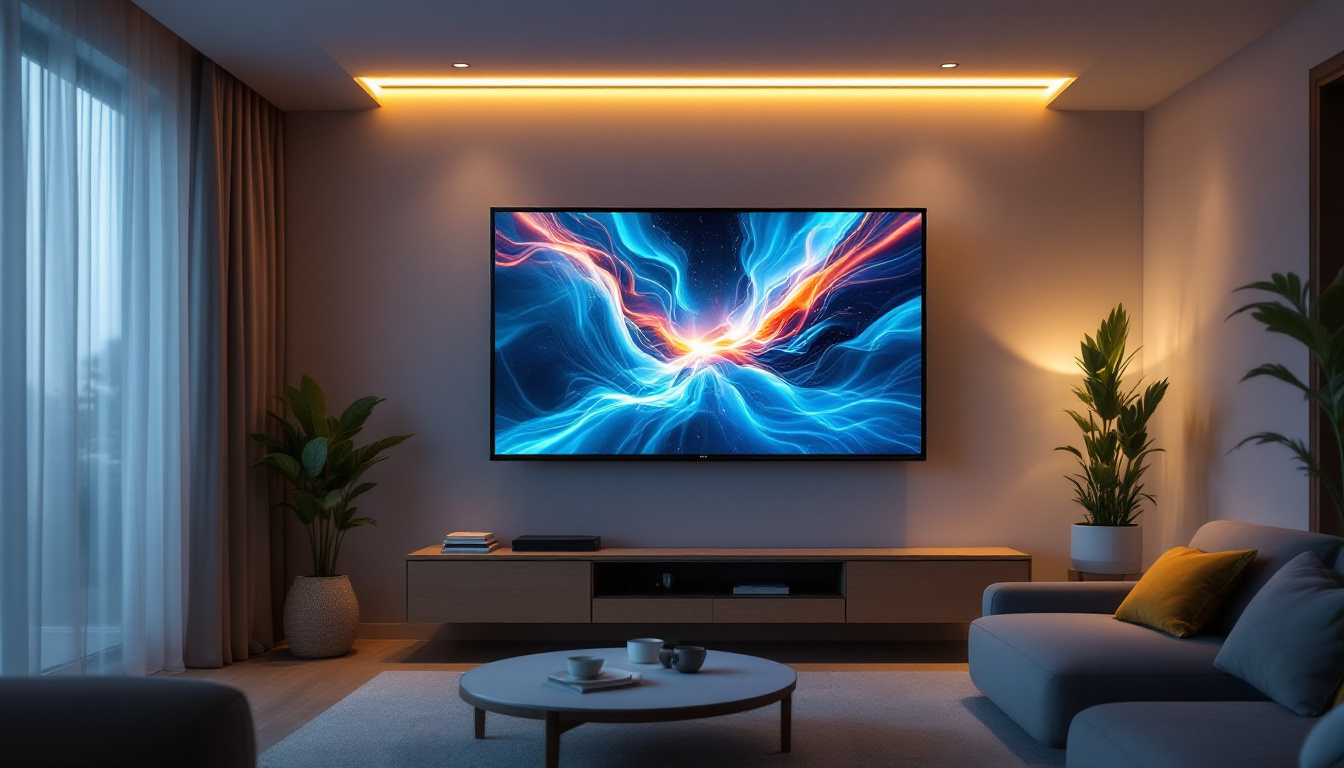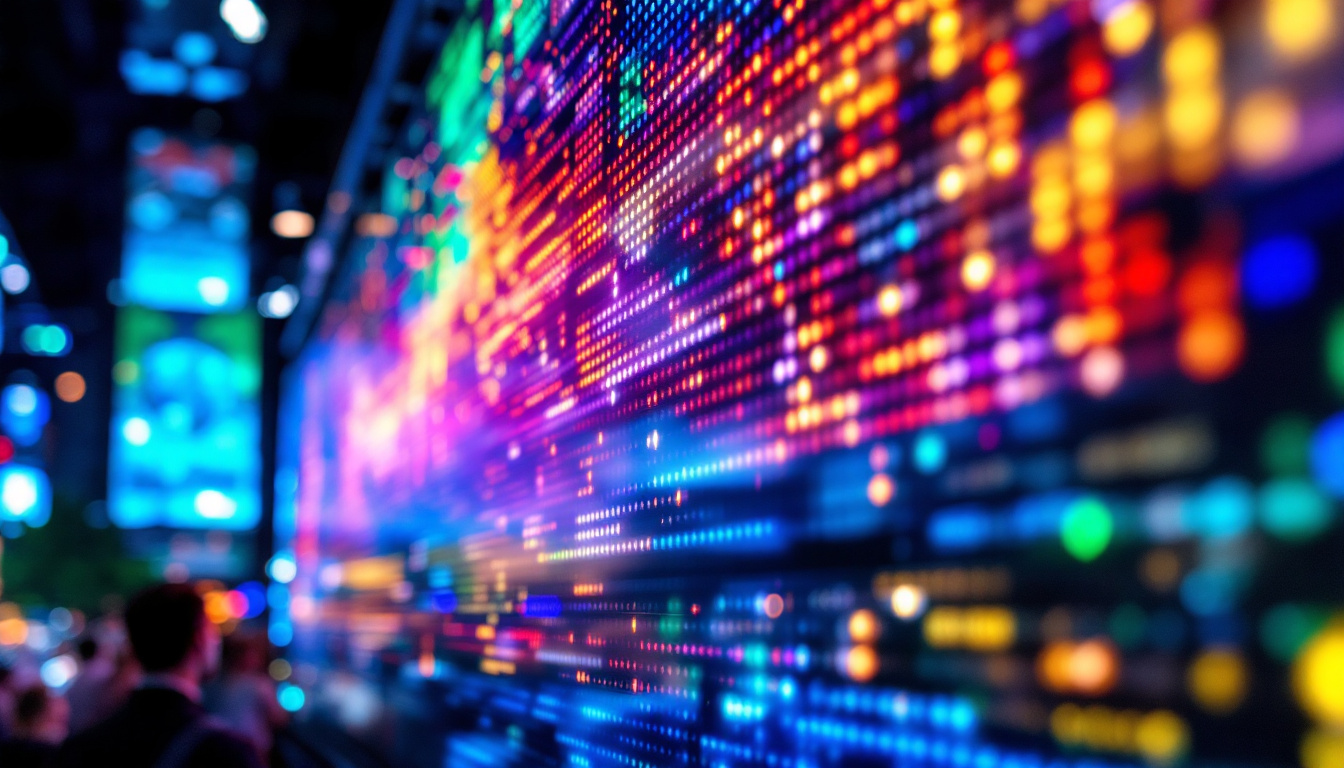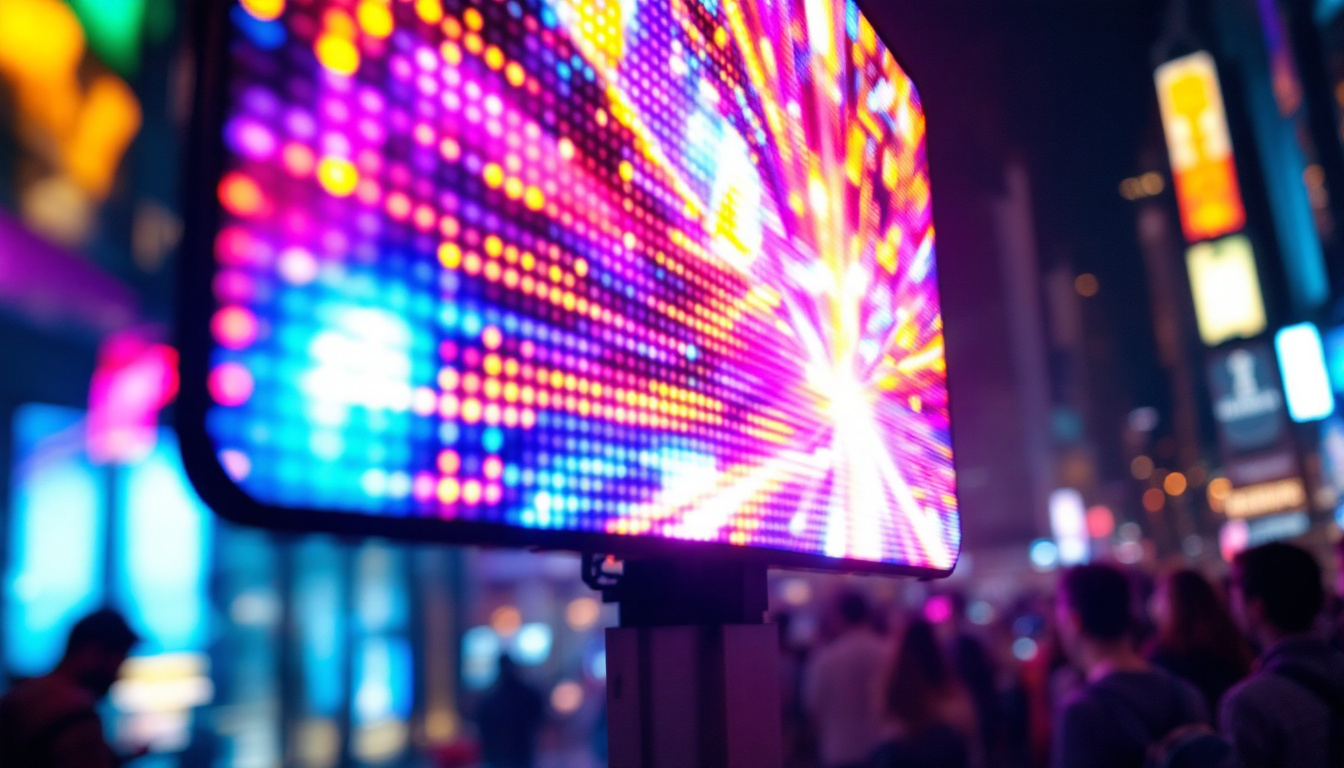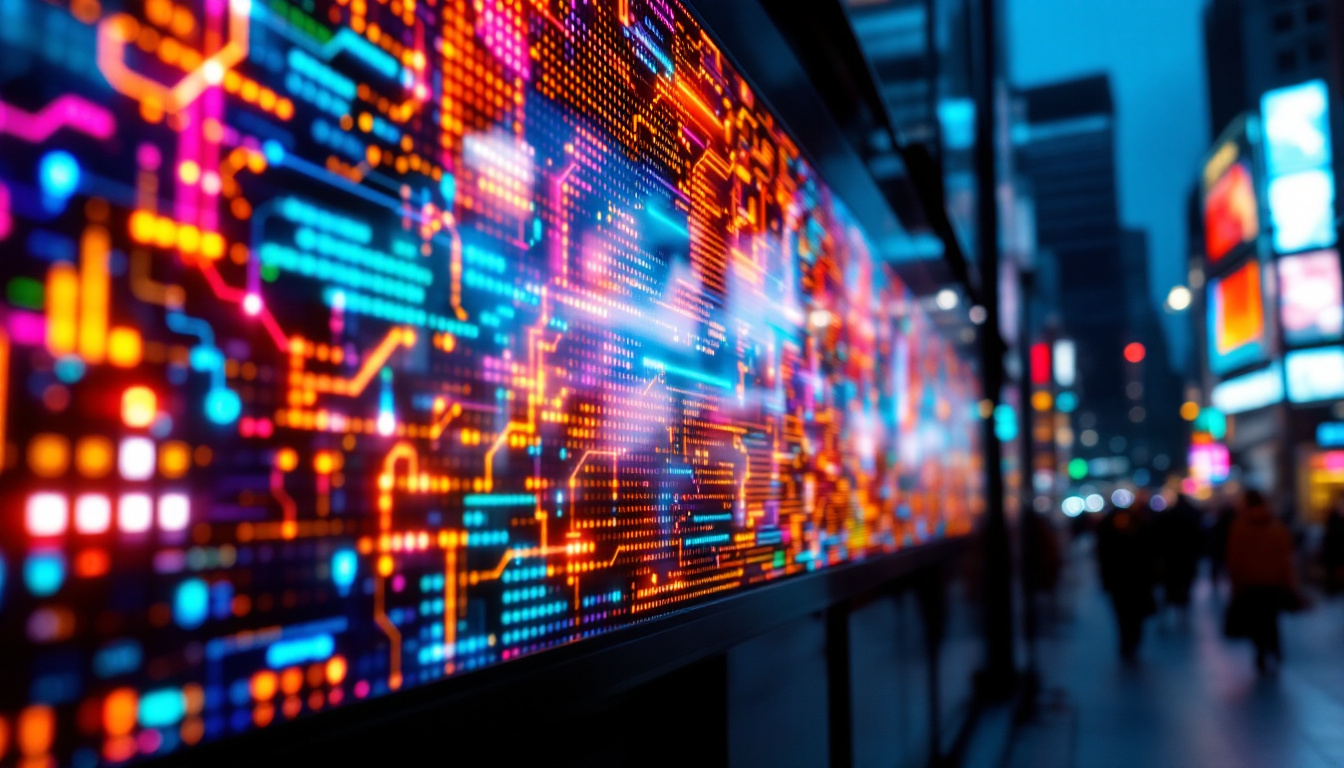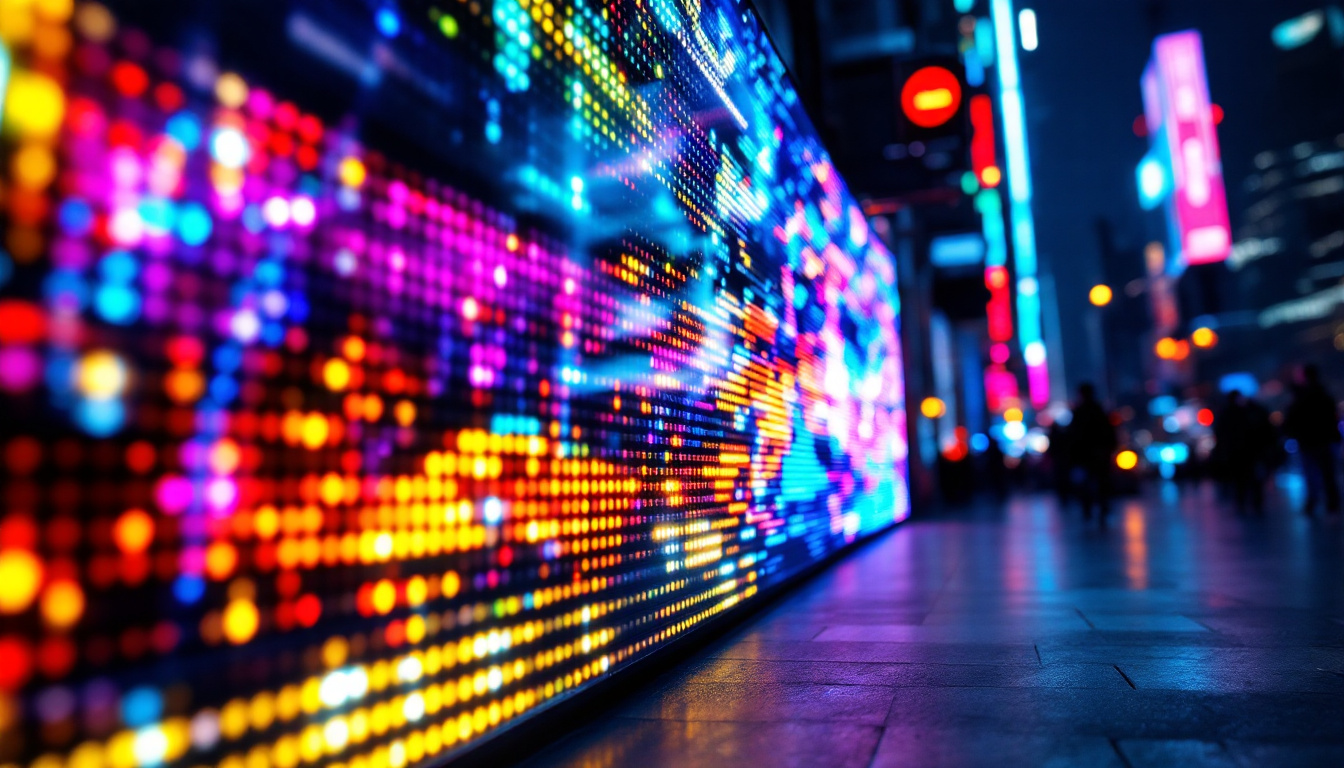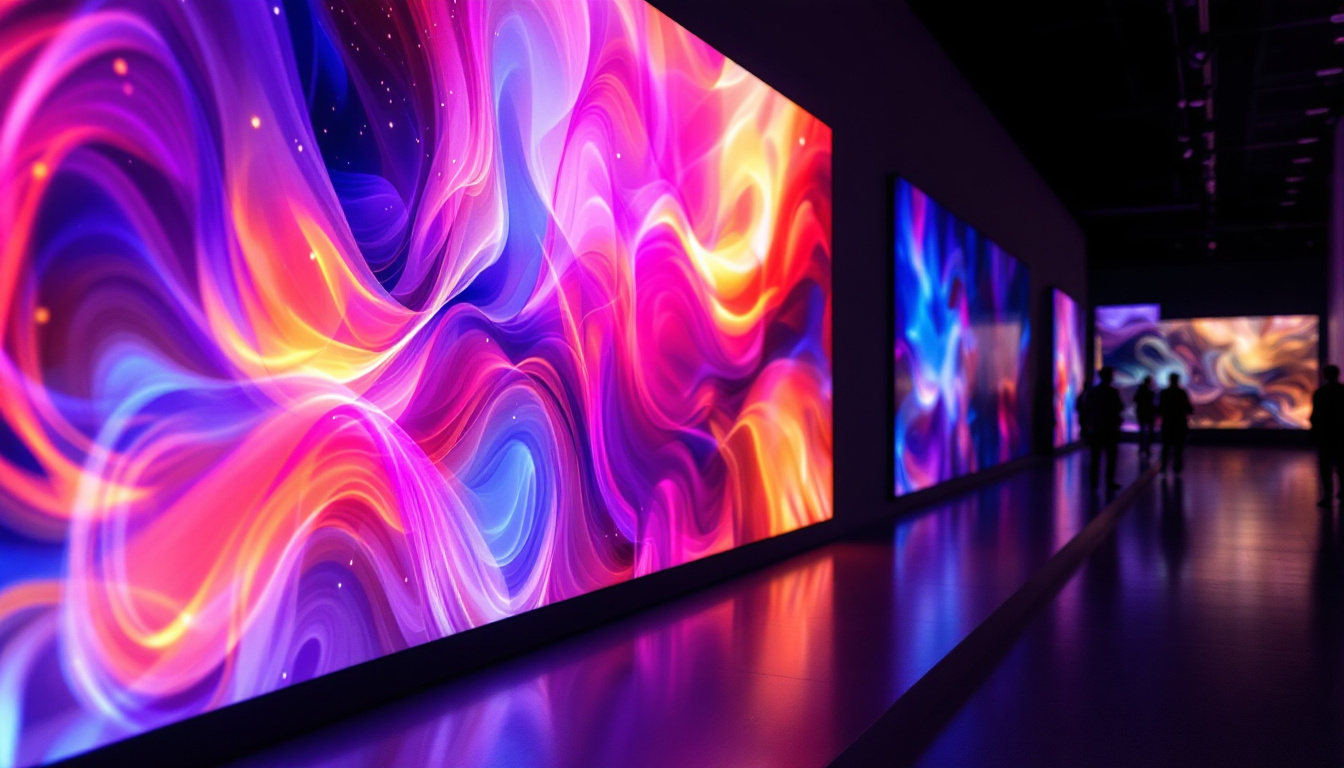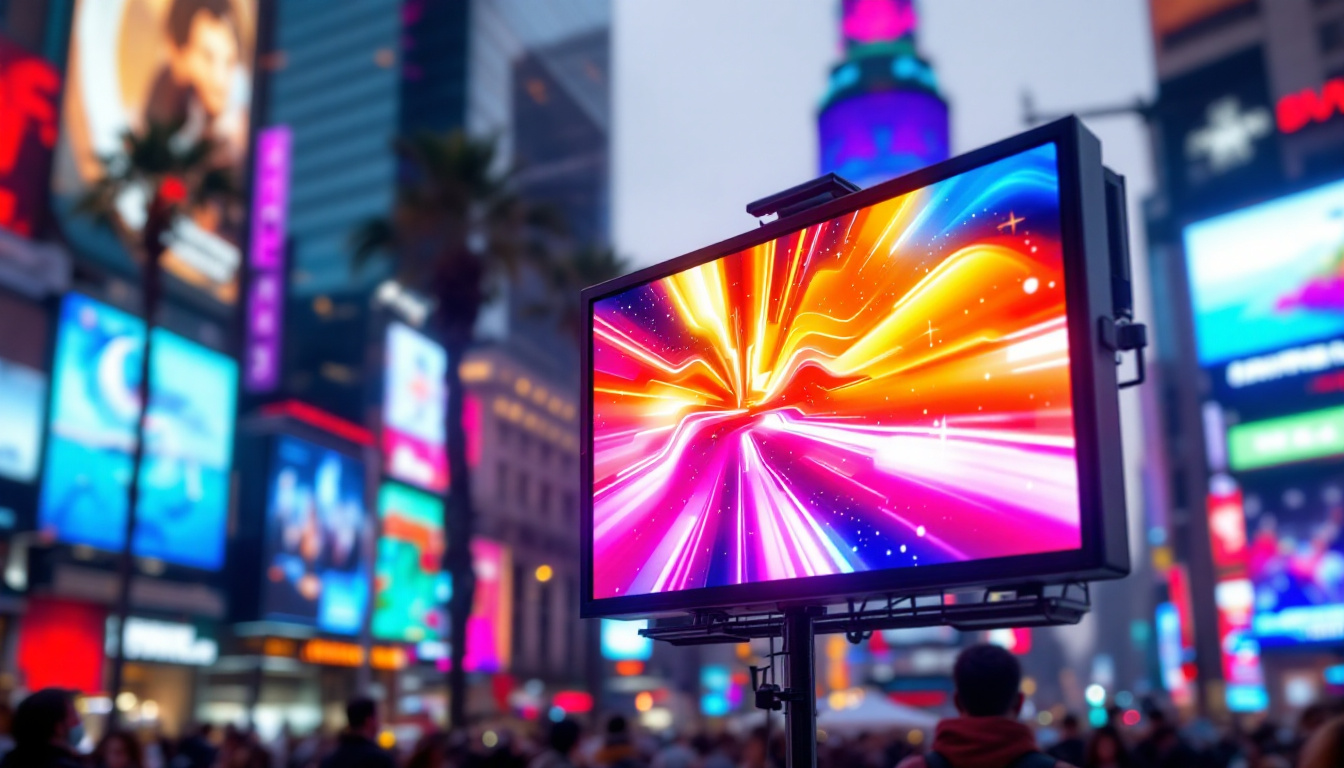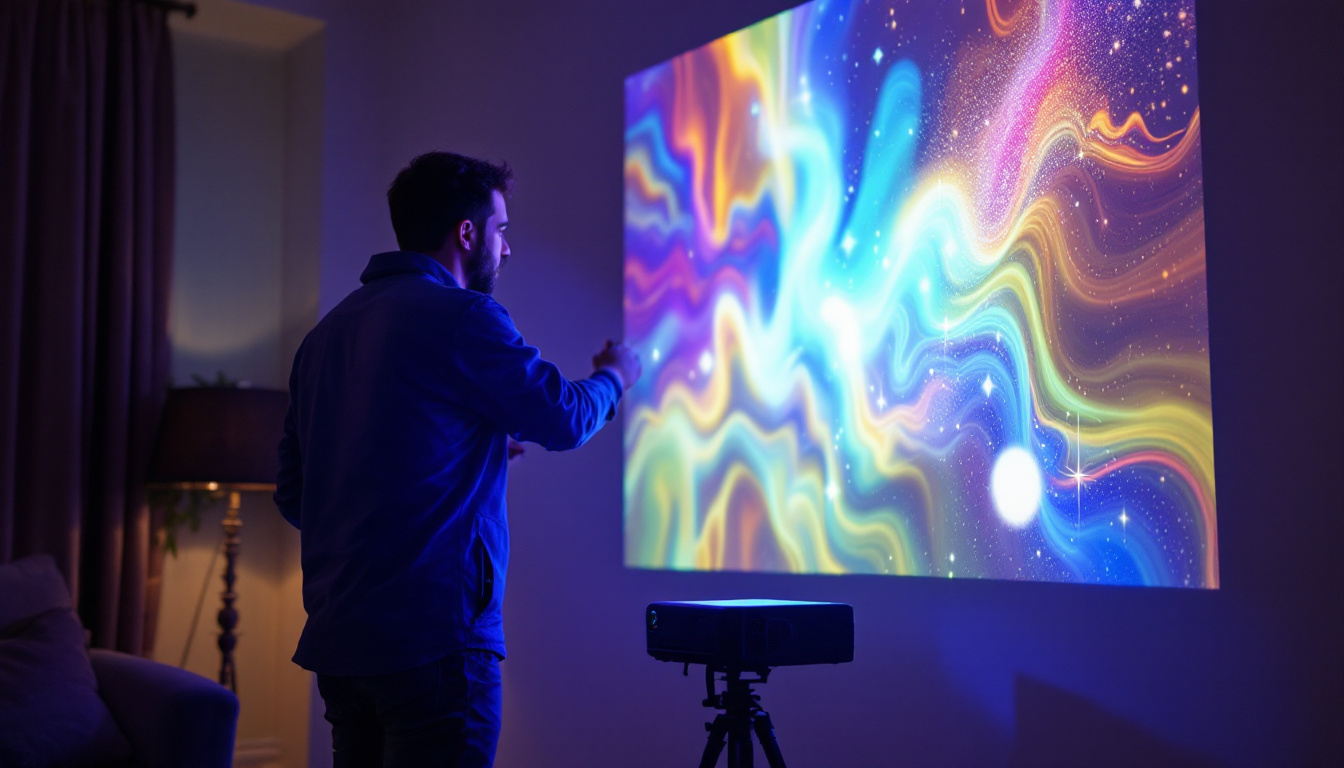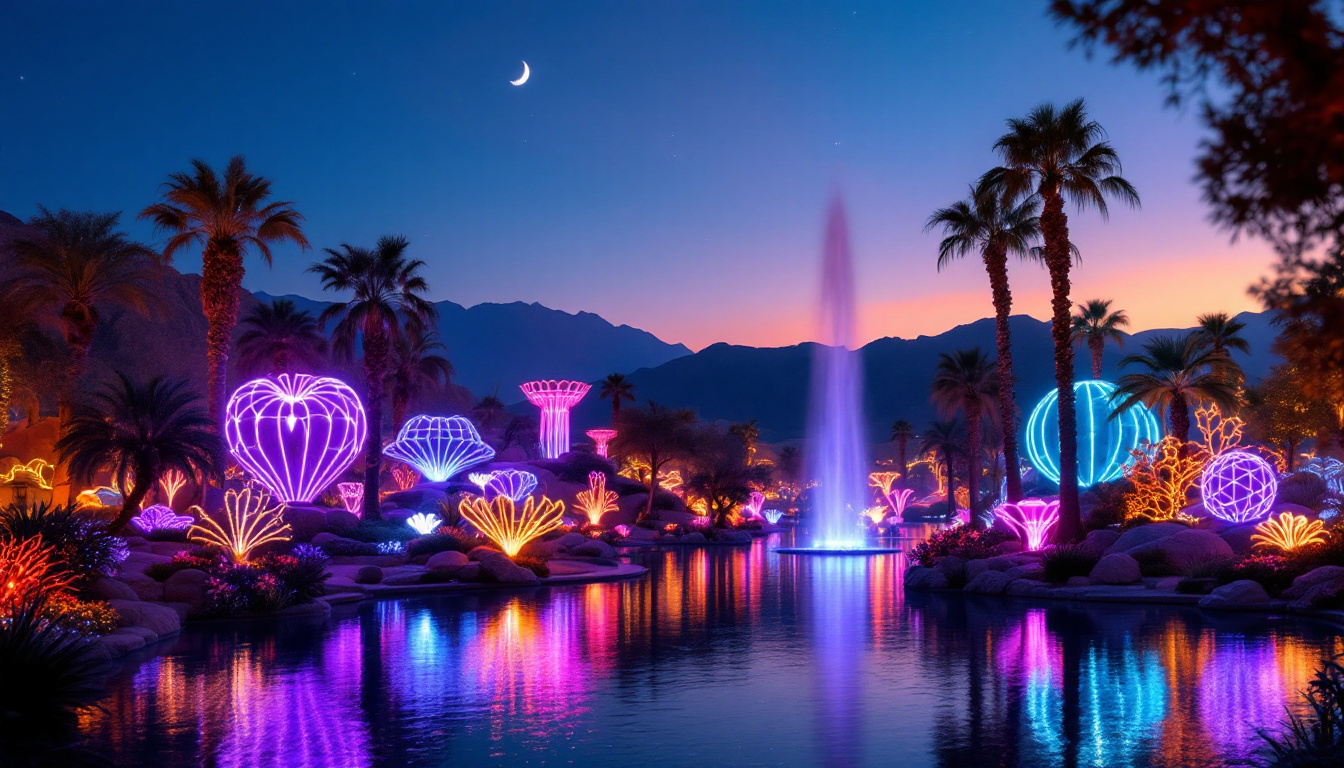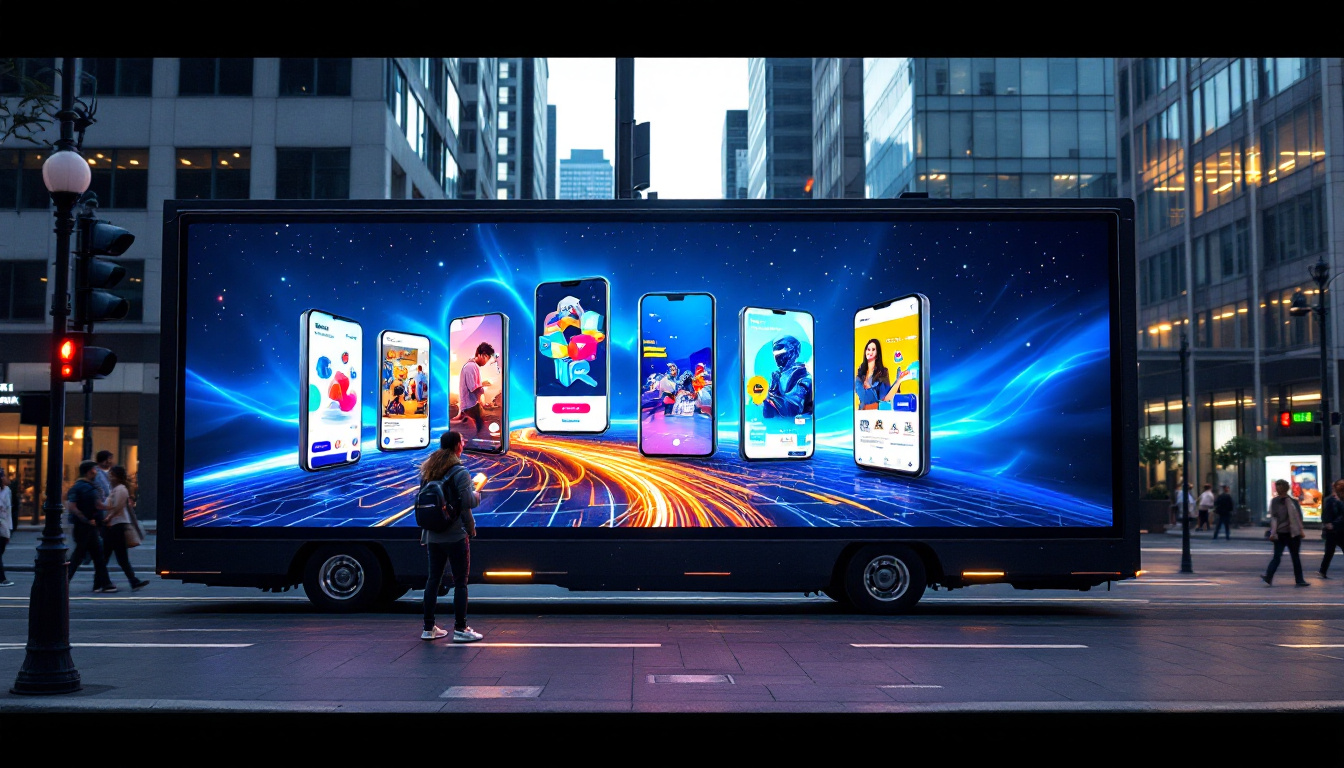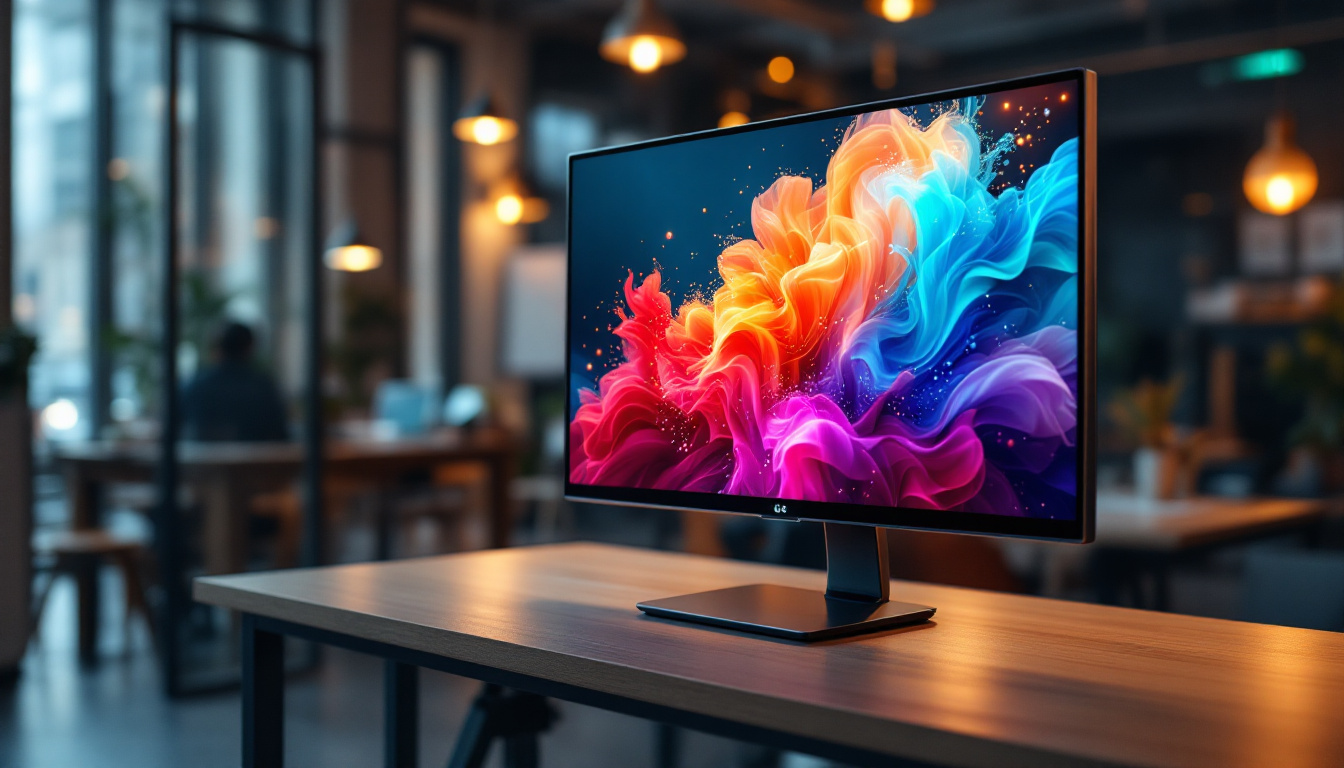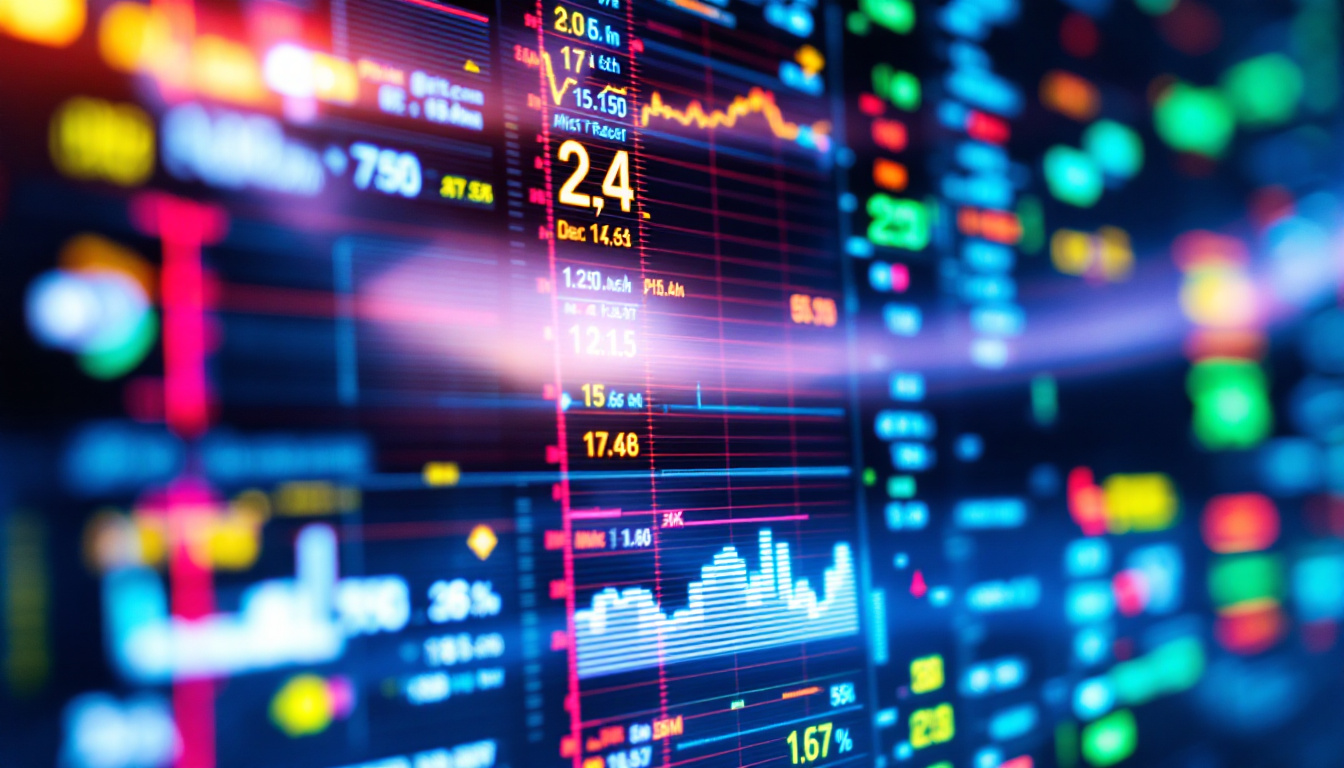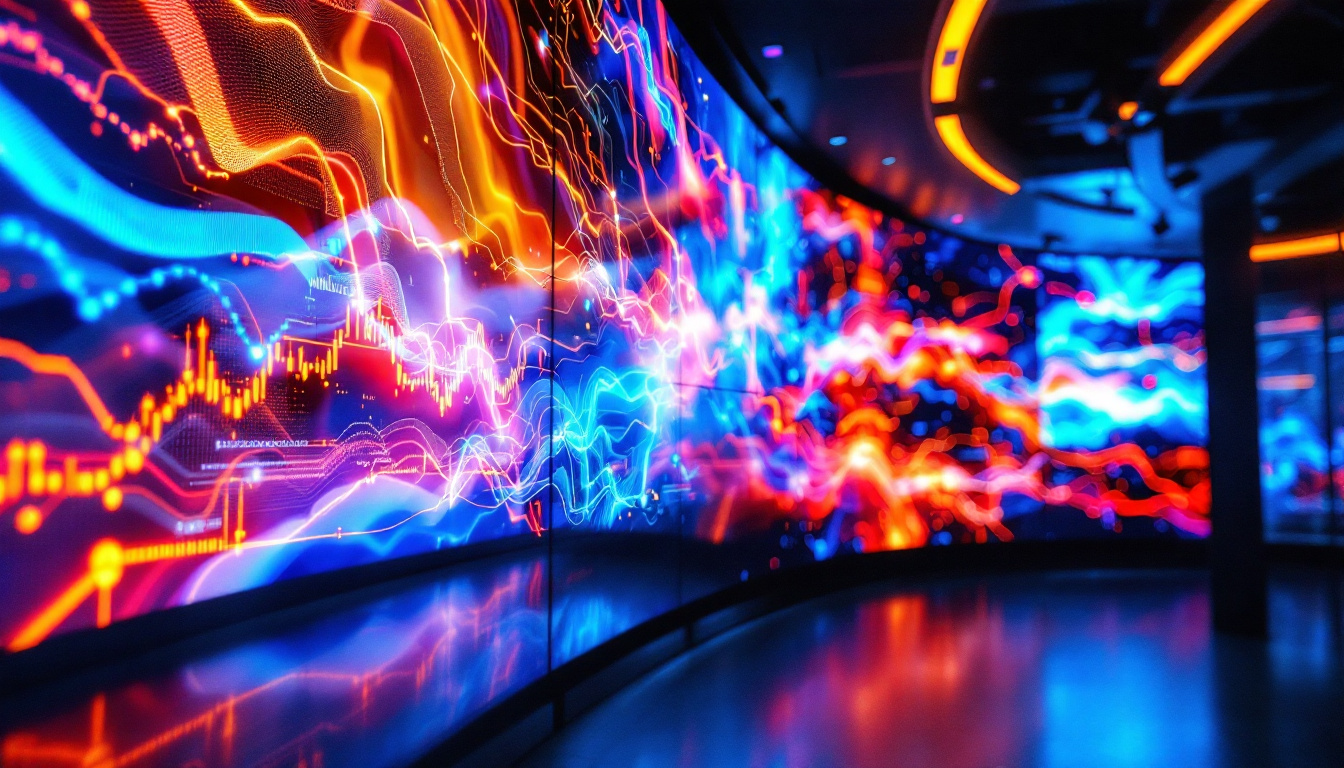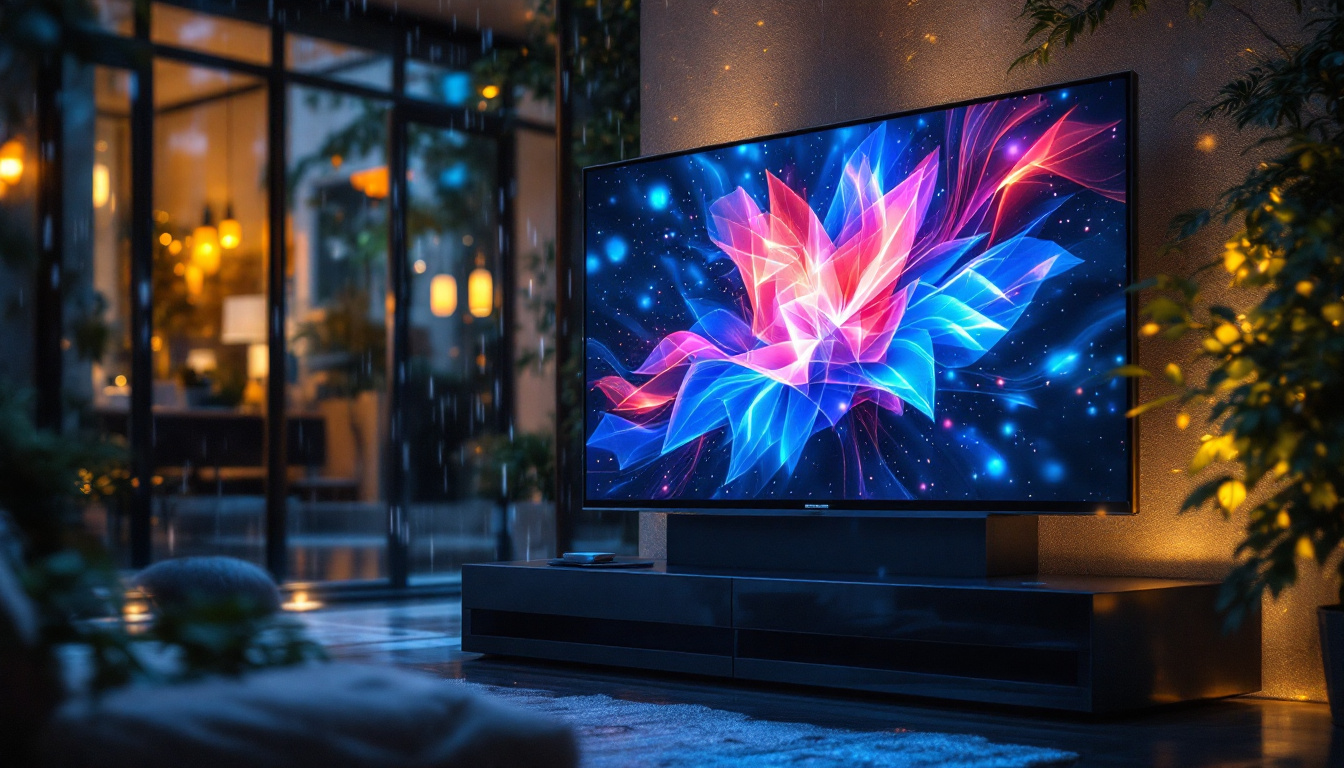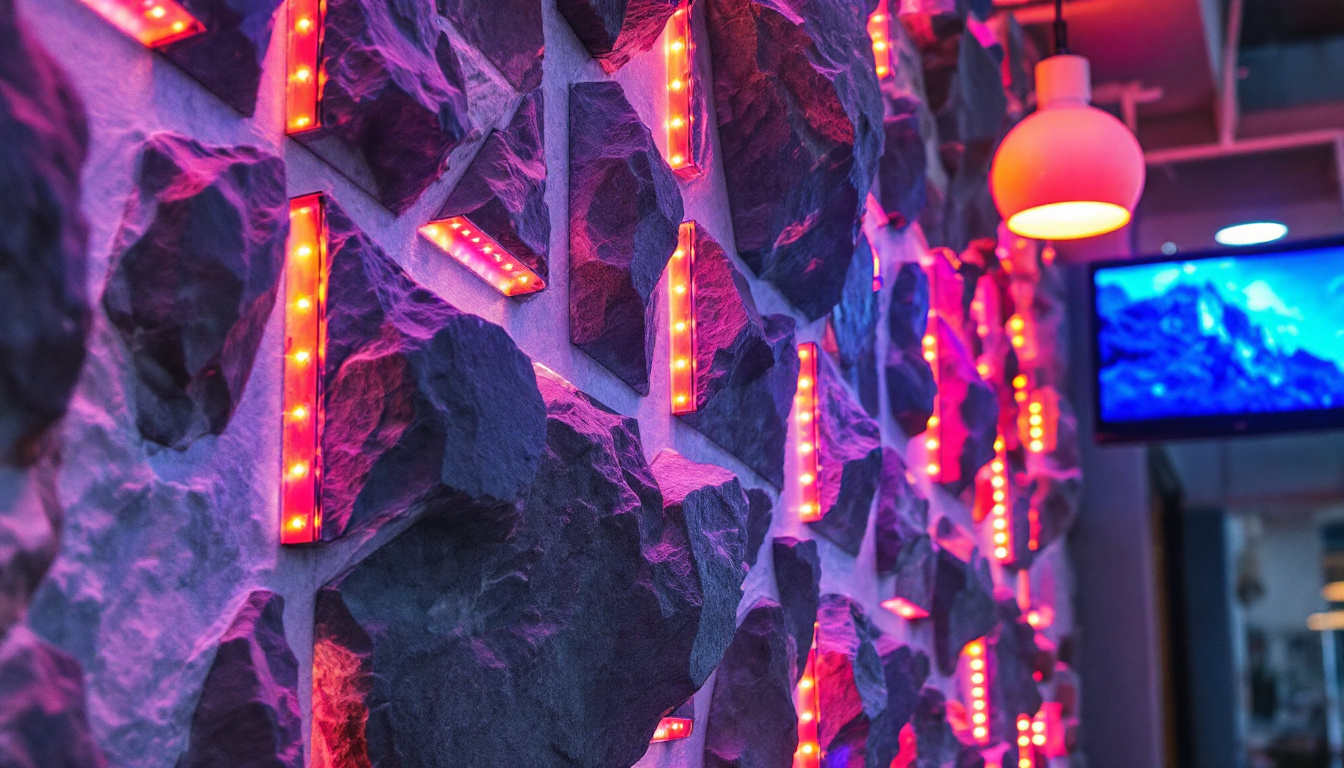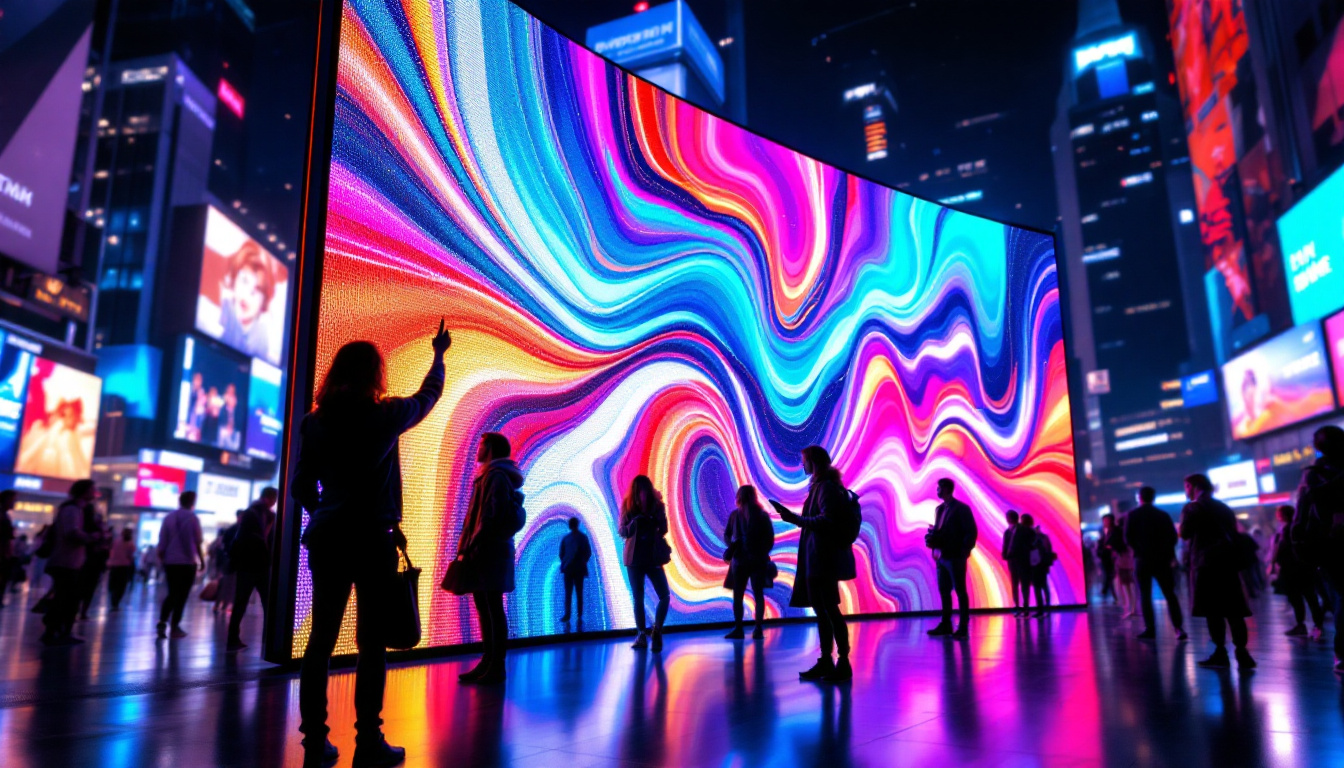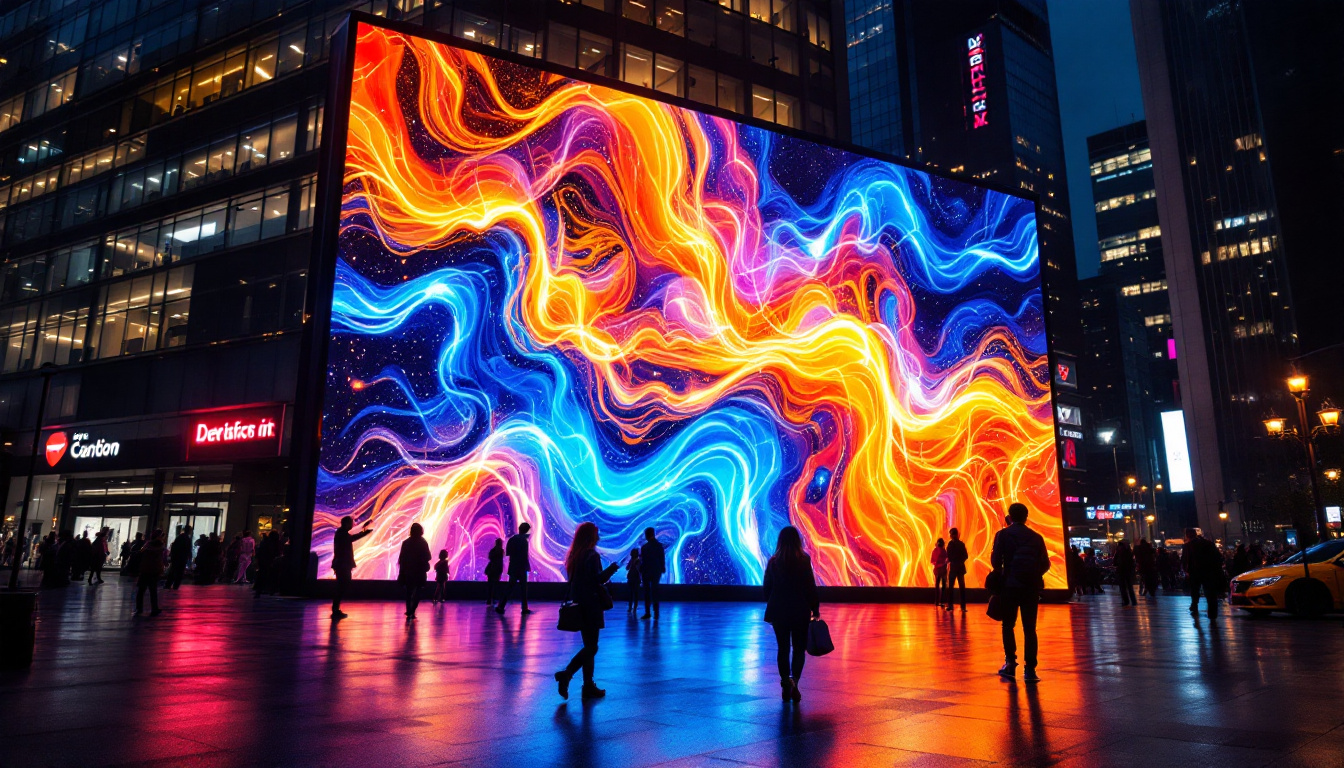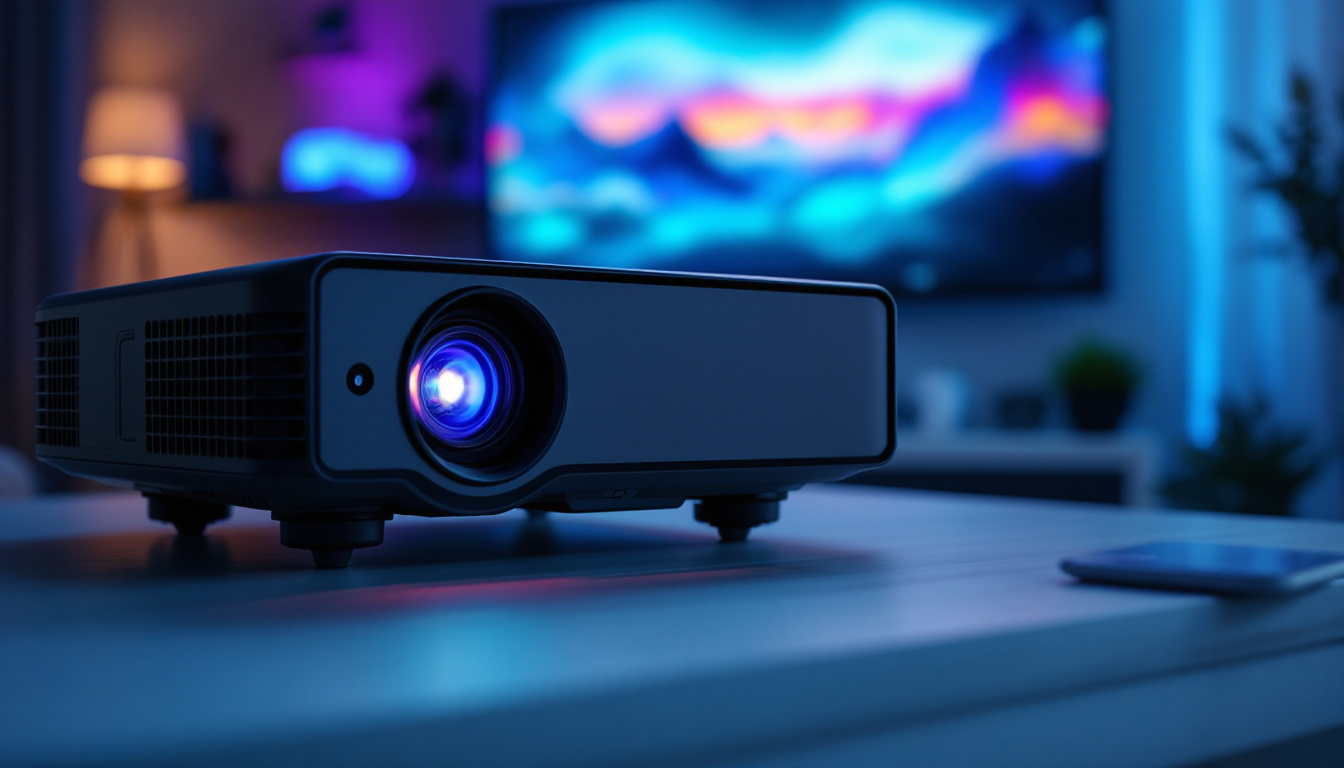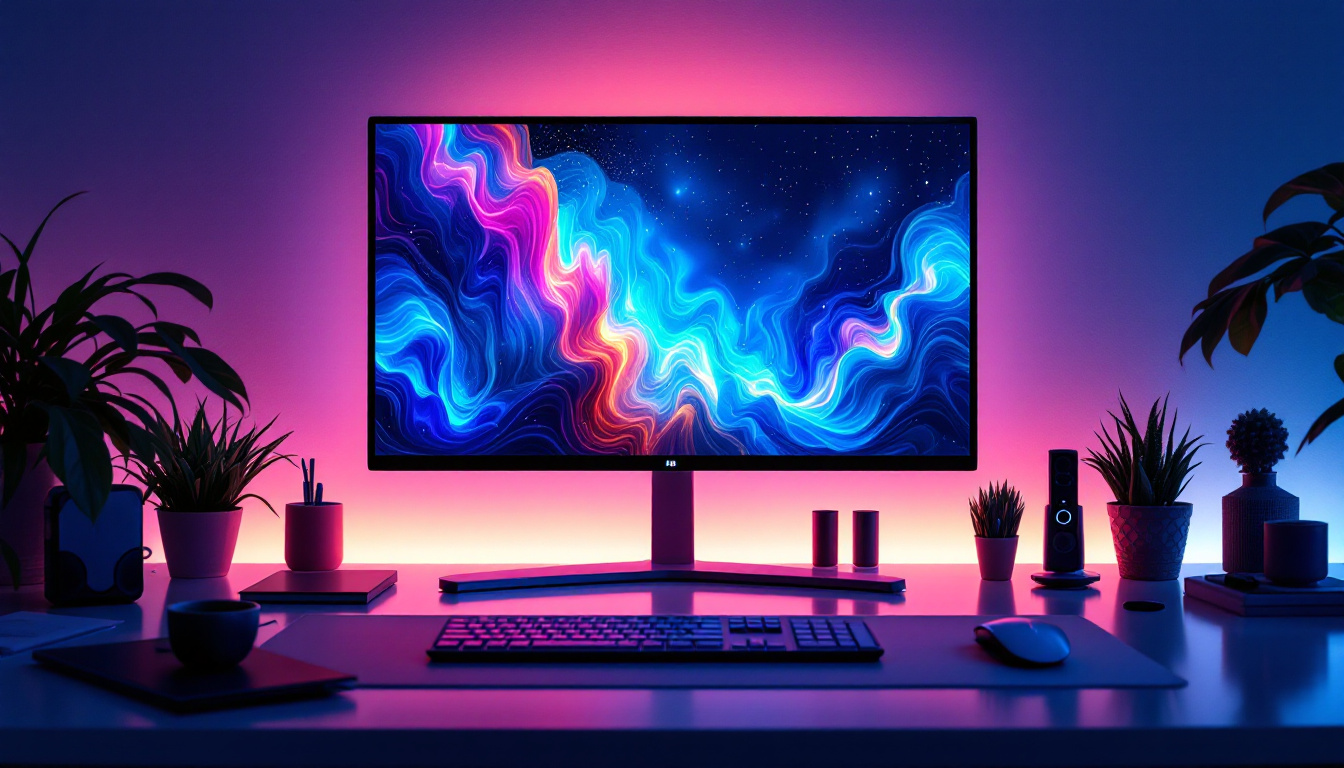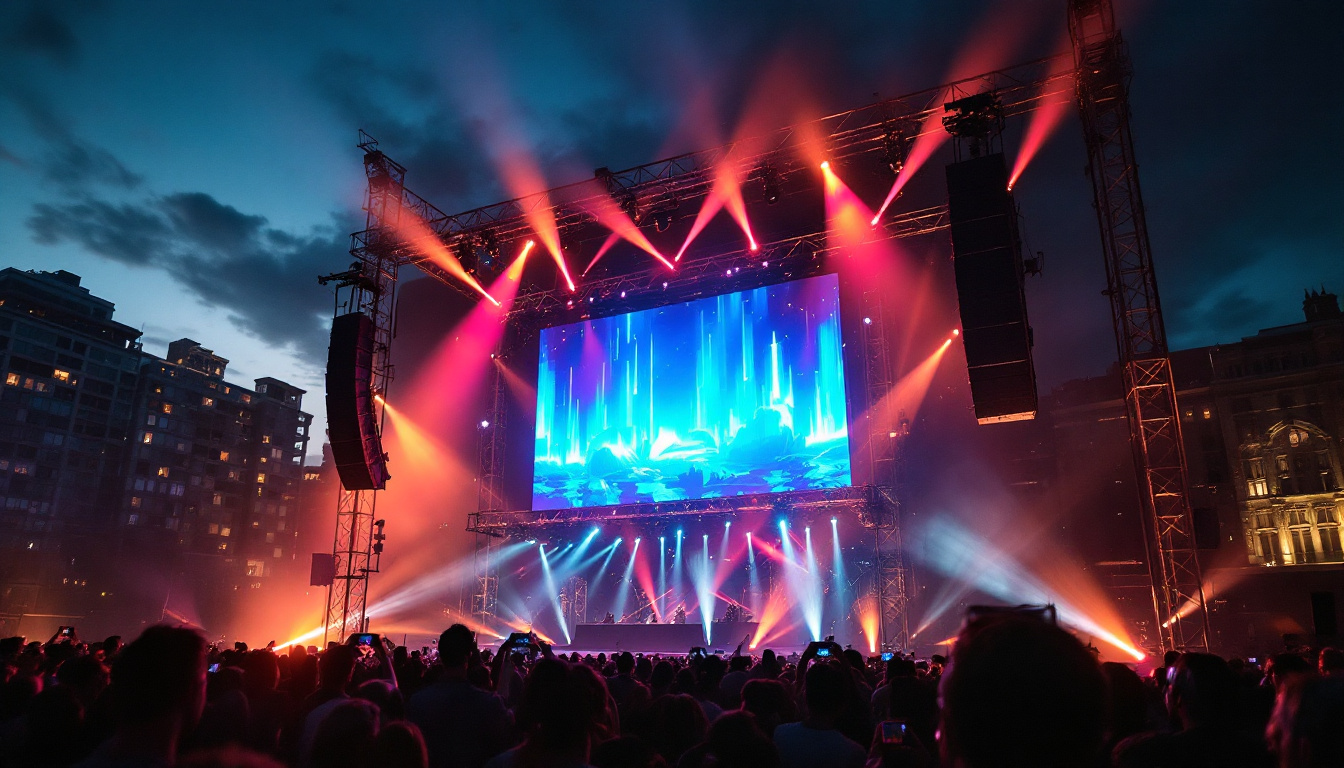In the realm of modern visual technology, large wall panels featuring LED displays have become increasingly prevalent. These displays are not just a trend; they represent a significant evolution in how information and entertainment are presented in various environments. From corporate settings to entertainment venues, LED wall panels have transformed the way we engage with visual content. This article delves into the intricacies of LED displays, exploring their components, benefits, applications, and future trends.
Understanding LED Technology
LED, or Light Emitting Diode, is a semiconductor device that emits light when an electric current passes through it. This technology has revolutionized the display industry, offering a brighter, more energy-efficient alternative to traditional display technologies. The shift to LED has not only enhanced visual experiences but has also contributed to significant energy savings, making it a popular choice for both commercial and residential applications.
The Basics of LED Displays
At its core, an LED display consists of numerous tiny light-emitting diodes arranged in a grid. Each diode is capable of producing light in various colors, allowing for the creation of vibrant images and videos. The combination of red, green, and blue (RGB) diodes enables a full spectrum of colors, making LED displays particularly appealing for dynamic content. This color mixing capability is crucial for applications ranging from advertising billboards to high-definition televisions, where color accuracy and brightness are paramount.
LED displays can be classified into two main types: direct view and backlit. Direct view LED displays are made up of individual LED modules that form the entire screen, while backlit displays use LEDs to illuminate an LCD panel from behind. The direct view technology is more commonly used in large wall panels due to its superior brightness and contrast. Additionally, direct view LEDs are increasingly being utilized in outdoor settings, where they can withstand various weather conditions while delivering stunning visual clarity even in direct sunlight.
Key Components of LED Displays
Understanding the components of an LED display is essential for grasping how these systems function effectively. The primary components include:
- LED Modules: These are the building blocks of the display, consisting of multiple LEDs that work together to create images.
- Control System: This system manages the input signals and controls the brightness and color of the LEDs to produce the desired output.
- Power Supply: LED displays require a stable power supply to function efficiently. The power supply converts AC to DC and regulates the voltage to the LEDs.
- Frame and Housing: The physical structure that supports and protects the LED modules, ensuring durability and stability.
In addition to these core components, LED displays often incorporate advanced technologies such as pixel mapping and image processing to enhance the visual output. Pixel mapping allows for precise control over individual pixels, enabling stunning graphics and animations that can adapt in real-time to the content being displayed. Image processing technologies further refine the quality of the visuals by adjusting color balance, contrast, and sharpness, ensuring that the display performs optimally across various lighting conditions.
Moreover, the versatility of LED technology extends beyond just displays. It is also being integrated into architectural lighting, automotive lighting, and even horticultural applications, showcasing its adaptability and efficiency. As the demand for energy-efficient solutions continues to grow, LED technology is poised to play a pivotal role in shaping the future of lighting and display solutions across multiple industries.
Advantages of LED Displays
LED displays offer numerous advantages that make them a preferred choice for large wall panels. Their unique characteristics provide benefits that can enhance user experience and operational efficiency.
Brightness and Clarity
One of the most significant advantages of LED displays is their exceptional brightness. Unlike traditional LCD screens, LED panels can produce high levels of luminance, making them visible in various lighting conditions, including direct sunlight. This feature is particularly beneficial for outdoor applications, where visibility is crucial.
Moreover, the clarity of images and videos on LED displays is remarkable. The high contrast ratio and vibrant color reproduction ensure that content is not only visible but also visually captivating. This clarity is essential for capturing audience attention in environments such as shopping malls, stadiums, and conference centers. In addition, the pixel pitch of LED displays can be tailored to suit different viewing distances, allowing for optimal resolution whether the viewer is up close or far away. This adaptability makes LED technology versatile for a range of applications, from advertising to artistic displays.
Energy Efficiency
Energy consumption is a critical consideration in any display technology. LED displays are known for their energy efficiency, consuming significantly less power than traditional display technologies. This efficiency translates into lower operational costs, making LED displays a cost-effective solution in the long run.
Furthermore, the longevity of LED technology contributes to its sustainability. LED panels can last up to 100,000 hours, reducing the need for frequent replacements and minimizing waste. This durability not only benefits the environment but also enhances the return on investment for businesses. Additionally, many LED displays come equipped with smart technology that allows for automated brightness adjustments based on ambient light conditions, further optimizing energy use. This capability not only supports energy conservation efforts but also enhances the viewing experience by ensuring that the display is always at its best, regardless of external lighting variations.
Applications of Large Wall Panels
The versatility of LED displays allows them to be utilized across various sectors, each benefiting from the unique features that these panels offer. From advertising to information dissemination, the applications are extensive.
Corporate Environments
In corporate settings, large wall panels serve as powerful communication tools. They can be used for presentations, video conferencing, and displaying important information in real-time. The ability to showcase dynamic content helps engage employees and enhances collaboration during meetings.
Moreover, LED displays can be integrated into digital signage systems, allowing companies to convey messages effectively to both employees and visitors. Whether it’s displaying company news, event schedules, or promotional content, these displays play a pivotal role in corporate communication.
Entertainment Venues
In the entertainment industry, large wall panels have become a staple in venues such as concert halls, theaters, and sports arenas. They provide an immersive experience for audiences, enhancing performances with stunning visuals and synchronized lighting effects.
For example, during concerts, LED displays can be used to project visuals that complement the music, creating a multi-sensory experience. Sports events also benefit from LED technology, as large screens provide instant replays, live statistics, and advertisements, keeping fans engaged and informed throughout the event.
Challenges and Considerations
Despite their numerous advantages, LED displays come with certain challenges that need to be addressed. Understanding these challenges is crucial for effective implementation and maintenance.
Initial Investment Costs
One of the primary challenges associated with large LED displays is the initial investment cost. While the long-term benefits and energy savings can offset these costs, the upfront expenditure can be significant. Businesses must carefully evaluate their budget and consider the potential return on investment before making a purchase.
Additionally, the cost of installation and maintenance should also be factored into the overall investment. Professional installation is often required to ensure optimal performance, which can add to the initial expenses.
Technical Expertise
Operating and maintaining LED displays requires a certain level of technical expertise. Organizations may need to invest in training staff or hiring professionals who are knowledgeable about LED technology. This requirement can pose a challenge for smaller businesses that may not have the resources to support such expertise.
Furthermore, troubleshooting and repairs can be complex, necessitating specialized skills. Having a reliable support system in place is essential for minimizing downtime and ensuring the display operates smoothly.
Future Trends in LED Display Technology
The future of LED display technology is promising, with continuous advancements paving the way for even more innovative applications. As technology evolves, several trends are emerging that are likely to shape the industry.
Increased Resolution and Pixel Density
As demand for higher-quality visuals grows, manufacturers are focusing on producing LED displays with increased resolution and pixel density. This development allows for sharper images and more intricate details, enhancing the overall viewing experience.
MicroLED technology, for instance, is gaining traction as it offers even higher resolutions and improved color accuracy. This technology utilizes microscopic LEDs to create displays that are not only brighter but also more energy-efficient.
Integration with Smart Technology
Smart technology is becoming increasingly prevalent in various sectors, and LED displays are no exception. The integration of smart features allows for enhanced interactivity and connectivity, enabling users to control displays remotely and access real-time data.
For example, smart LED displays can be connected to the Internet of Things (IoT), allowing for dynamic content updates based on audience behavior or environmental factors. This capability enhances the effectiveness of digital signage and improves user engagement.
Conclusion
Large wall panels featuring LED displays represent a significant advancement in visual technology, offering unparalleled brightness, clarity, and energy efficiency. Their versatility allows for a wide range of applications across various sectors, from corporate environments to entertainment venues. While challenges such as initial investment costs and the need for technical expertise exist, the benefits far outweigh these concerns.
As technology continues to evolve, the future of LED displays looks bright, with trends such as increased resolution and smart integration paving the way for innovative applications. Embracing this technology can enhance communication, engagement, and overall user experience, making LED displays an invaluable asset in today’s digital landscape.
Discover the Future of Visual Technology with LumenMatrix
Ready to elevate your space with the latest in LED display innovation? LumenMatrix offers a comprehensive range of cutting-edge LED display solutions tailored to meet your needs. Whether you’re looking to captivate your audience with an Indoor LED Wall Display, make a bold statement with an Outdoor LED Wall Display, or create a dynamic environment with our Custom and All-in-One LED Displays, we have the technology to bring your vision to life. Experience the future of visual communication and transform your message into an unforgettable visual journey. Check out LumenMatrix LED Display Solutions today and see the difference for yourself.

